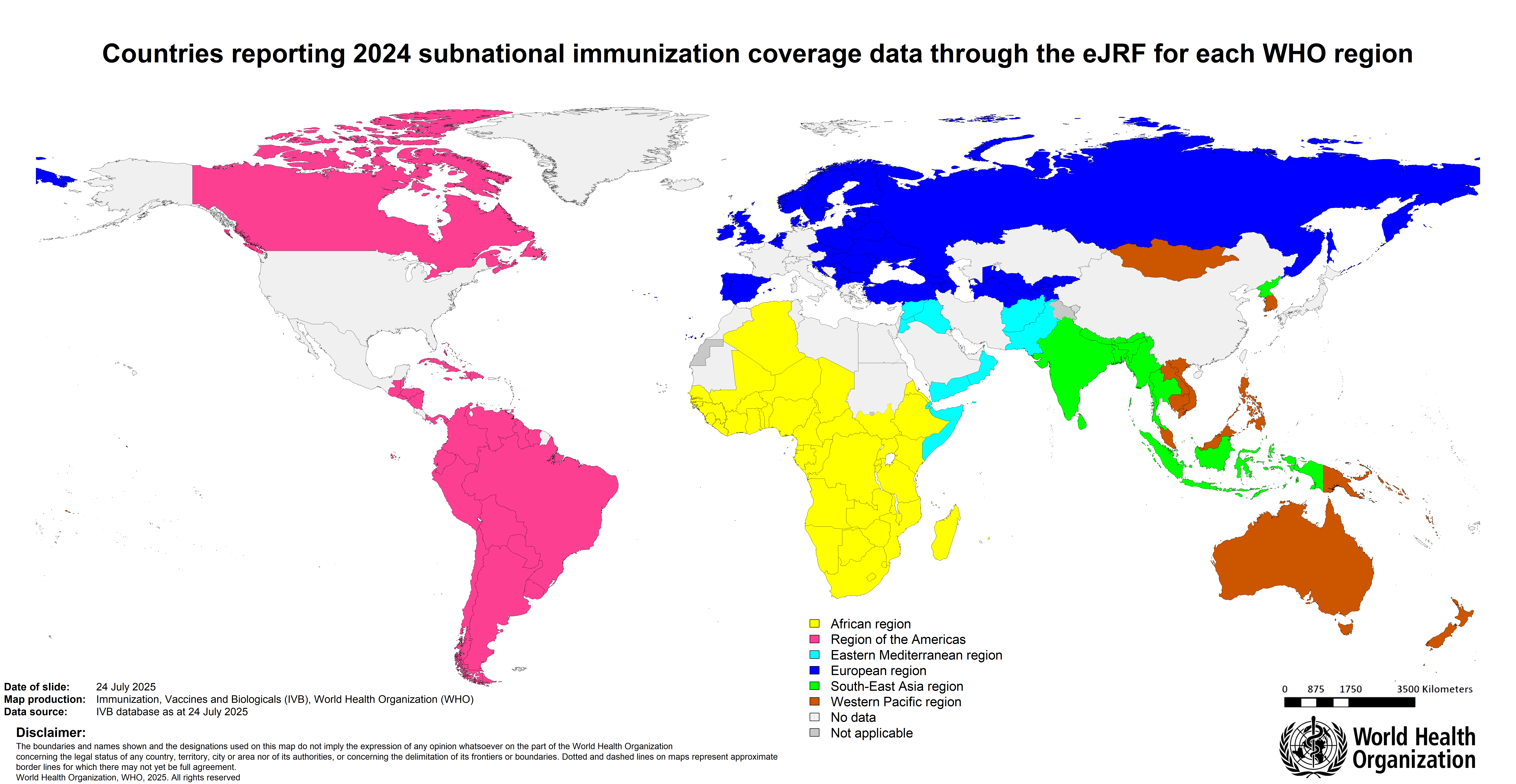Subnational immunization coverage data
150 Member States from all WHO regions have shared 2024 subnational coverage data
Since 2017, WHO has collected and is publishing subnational immunization coverage data reported by its Member States. Member States were asked to report their numerator (number of doses administered), denominator (number of eligible individuals) and coverage data (% of eligible individuals receiving the relevant dose of vaccine) for the first and third dose of DTP-containing vaccines (DTP1, DTP3) and measles containing vaccine (MCV1) from their second administrative level (“admin2” often called districts). The data collection is done through the WHO/UNICEF Joint Reporting Form process.
In 2024, 150 Member States shared their subnational data, either from their first subnational administrative level (“admin1”) or admin2 level for DTP1, DTP3 and/or MCV1. Data has been shared for more than 22 000 admin1 and/or admin2 and represents about 85% of the total number of surviving infants worldwide. Among them, 97 Member States report coverage for DTP3 at admin2 level, and 53 Member States report coverage for DTP3 at admin1 level only. Note that the size of the target population (in the case of DTP3, the number of infants surviving at 12 months of age) of reporting districts varies significantly from one district to another. Indeed, the median number of surviving infants in all reported districts is 622, ranging from a population of surviving infants of one in the smallest districts to more than 420 000 in the largest (Lahore, Pakistan).
National coverage data often conceals large inequalities in coverage and access within the country, that can be discovered through subnational monitoring. Targeting specific subnational areas with focused interventions will help countries achieve high and equitable coverage and meet their IA2030 Coverage and Equity goal.
WHO and UNICEF are increasing efforts to gather subnational coverage data and support countries in improving the quality and use of the subnational coverage data to take actions to achieve high and equitable immunization coverage. 
Resources
